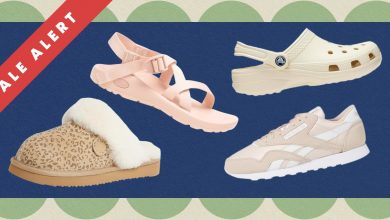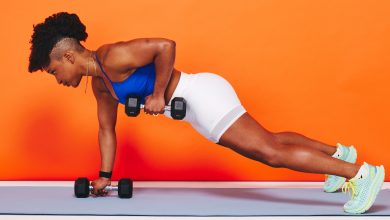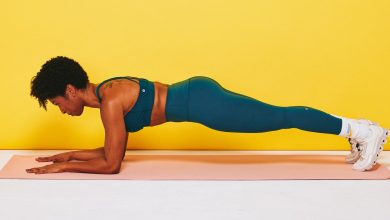Here's How You Get 10,000 Swarovski Crystals on a Teeny-Tiny Leotard

Gymnastics—like diving and figure skating—is an Olympic sport where artistry and aesthetics are intertwined with athleticism. As Simone Biles and her teammates catapult and contort their bodies this month in Paris, they’ll be doing so in leotards embellished with roughly 10,000 diamond-shaped Swarovski crystals. (That’s nearly 2,000 more than Team USA wore back in Tokyo in 2021.) Wearing the uniforms to compete is the last step in a process that took four years and more than 50 people to complete.
“When I opened up the Olympic leotards, my first thought was that they were absolutely stunning,” Jade Carey, an Olympic gold medalist and 2024 Paris Team USA gymnast, tells SELF. Carey, Biles, Jordan Chiles, Sunisa Lee, and Hezley Rivera, unboxed their new leotards, which were made by gymnastics apparel company GK Elite, earlier this month. “They are full of crystals, super patriotic, and really beautiful,” Carey says. “I can’t wait to see how they shine under the lights in the arena.”
GK Elite
For Jeanne Diaz, GK Elite’s director of design, and Erica Schnebel, the company’s director of marketing, it was a powerful moment. “I’m getting chills still thinking about it,” Schnebel tells SELF. “As they started opening it, I’m watching their faces, I’m watching their reactions, and I think, outside of their excitement, one thing that struck me was Jeanne’s reaction—I looked over and she’s bawling happy tears because that’s her work coming to life,” Schnebel says. “This is a team of athletes we know really well and couldn’t have been prouder of each of them.”
How to make a leotard with 10,000 crystals for the best gymnasts in the world
Diaz notes that each leotard is crafted, first and foremost, with functionality in mind, which starts with intel from the experts themselves. She says that GK Elite polls USA Gymnastics members on what features—from necklines to fabrics to the amount of bling—they’ve most enjoyed, or perhaps disliked, in previous uniforms. Still, as Diaz says, there aren’t usually many surprises. That’s because the company has suited up Olympic gymnasts since 1996, so after almost three decades, they have a pretty good idea of what works and what doesn’t.
Another way to ensure the leotards help, rather than hinder, performance? They’re each custom-made. “We make a leotard for every athlete that was competing at the Olympic trials, and we have all their sizing ahead of time,” Diaz explains, adding that each garment is laser-cut for super precise measurements. (Basically, they’re meant to feel like a second skin.)
Getty Images/Unal/Anadolu
As Diaz explains, each piece moves through 30 departments—from creative ideation to sewing to stone placement (many of which are applied by hand using tweezers!)—and around 50 employees are involved in its life cycle. Diaz’s portion of that journey, which included creating the look through mood boards, began in 2021 at the Tokyo Olympics (the whole process was about four years in the making). “Not all host cities lend themselves to inspiring a fashion collection, but Paris, being the fashion mecca of the world, really does,” she notes, adding that inspiration came from Parisian design and art, including soft, curved lines; Chantilly lace; and even corsetry. “All of those French elements came into play with our mood boards,” Diaz explains.
Still, as she notes, the leotards—each person on the team receives eight, which are designed for different performances and have names like the Star Spangled Shine, Luminous Legacy, and Go for Glory, which is for the team finals—are as patriotically red, white, blue, starry, and stripey as ever. (USA! USA! USA!) Schnebel says that each leotard also has a matching scrunchie (perhaps reminiscent of hairstyles you’d see on iconic 90s gymnasts.) “It’s something that the athletes love and, honestly, has become a bit of a GK thing in the gymnastics community,” explains.
One key department is jewel placement, as many crystals are too large (or the design too intricate) to be embellished by machine. In those instances, Kira Feick, GK Elite’s laser jewel supervisor, hand-places each and every gem on heat transfer paper (that ultimately gets applied to the garment). “Working on the leotards that will be worn by the USA Gymnastics team is such a prideful moment for me,” Feick, who’s been with the company for 14 years, tells SELF. “While I was hand-placing crystals on these leotards, all I could think about was how the athletes’ hard work will come together on the world’s biggest stage for the sport of gymnastics. It’s a really cool feeling!”
“Our athletes always tell us that more is more with crystal usage,” Diaz says. If nearly a pound—0.8 to be precise—of jewels sounds like it might bog down the gymnasts, Diaz notes that there “was really no concern that it was going to hinder performance.”
Carey says she’s used to that kind of weight on the floor. “Some of them are a little bit heavier than the others, but nothing too crazy,” she explains. “They feel really comfortable to wear.”



